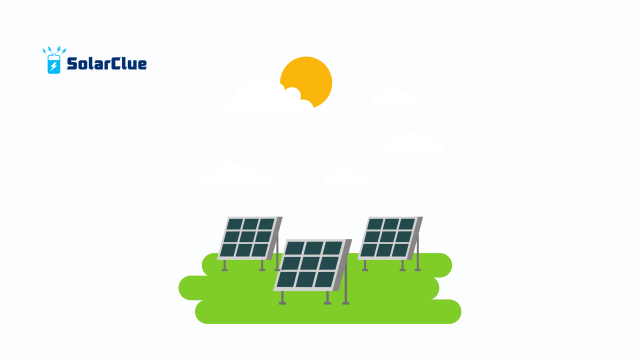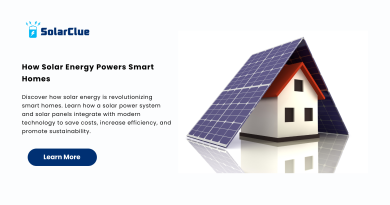Solar Energy for Educational Institutions: A Complete Guide
The demand for clean and renewable energy is increasing rapidly, and one of the best solutions is solar energy. Educational institutions like schools, colleges, and universities consume a significant amount of electricity every day for lighting, fans, air conditioners, labs, and administrative operations. By installing a solar power system, these institutions can reduce their electricity bills, promote sustainability, and create an environment of learning that aligns with the future of renewable energy. This blog will explain why solar energy for educational institutions is becoming essential, its benefits, installation process, and frequently asked questions.
Table of Contents
- 1 Why Educational Institutions Need Solar Energy
- 2 Benefits of Solar Energy for Educational Institutions
- 3 How Solar Power System Works in Schools and Colleges
- 4 Factors to Consider Before Installing Solar Energy in Institutions
- 5 Government Incentives for Educational Institutions
- 6 Real-Life Impact of Solar Energy in Educational Institutions
- 7 Challenges in Adopting Solar Energy in Educational Institutions
- 8 Future of Solar Energy in Educational Institutions
- 9 FAQs
- 10 Conclusion
Why Educational Institutions Need Solar Energy
Educational institutions play a vital role in shaping the future generation. By adopting solar energy, they not only reduce operational costs but also teach students the importance of sustainability and renewable resources. Some key reasons are:
-
Rising electricity bills put financial pressure on schools and colleges.
-
Institutions often have large rooftops that are perfect for solar power system installations.
-
Going solar reflects a commitment to environmental responsibility.
-
Government subsidies and incentives make it easier for schools to adopt solar energy.
Benefits of Solar Energy for Educational Institutions
Reduction in Energy Costs
Running a school or college involves a huge monthly electricity expense. By installing a solar power system, institutions can cut down their utility bills significantly. The saved money can be redirected towards improving infrastructure, student facilities, or technology.
Sustainability and Green Campus
Adopting solar energy helps institutions move towards carbon neutrality. Students get to experience a real-life example of how renewable energy works, making the campus a living laboratory for sustainability.
Energy Independence
Educational institutions often face power cuts or fluctuations that disrupt learning. A solar power system provides reliable electricity and, when combined with storage batteries, ensures uninterrupted power supply.
Long-Term Investment
Solar panels have a lifespan of 25+ years. Though the initial cost may seem high, the long-term savings outweigh the investment. Over time, the solar energy generated makes institutions almost self-reliant in terms of electricity.
Teaching Opportunity
Installing solar energy systems allows students to learn practically about renewable energy technologies. It can be included in science labs, environmental projects, or sustainability courses.
How Solar Power System Works in Schools and Colleges
A solar power system for an institution typically consists of:
-
Solar panels installed on rooftops to capture sunlight.
-
Inverters to convert direct current (DC) into alternating current (AC).
-
Meters and controllers to manage energy flow.
-
Battery storage systems (optional) to store excess power.
The generated solar energy can be used directly in classrooms, labs, libraries, hostels, and offices. Any excess electricity can be exported to the grid through net metering.
Factors to Consider Before Installing Solar Energy in Institutions
Rooftop Space and Orientation
Large, unused rooftops are ideal for installing a solar power system. The panels should be placed at the right angle and direction for maximum sunlight exposure.
Budget and Financing Options
Though the cost of installing solar energy has decreased, schools and colleges should evaluate their budget. Many financing options, subsidies, and government incentives are available for educational institutions.
Maintenance
Solar panels require minimal maintenance. Cleaning them regularly and ensuring there are no obstructions like trees or debris is enough to keep the system efficient.
Energy Requirements
Institutions should calculate their daily energy consumption to design the right-sized solar power system. A small school may need a smaller system, while a university campus with labs, hostels, and multiple buildings may require a larger setup.

Government Incentives for Educational Institutions
Governments across India encourage institutions to switch to solar energy by offering:
-
Capital subsidies for installation.
-
Tax benefits and depreciation claims.
-
Net metering policies allowing institutions to sell extra energy back to the grid.
These incentives make solar power system installation more affordable and profitable in the long run.
Real-Life Impact of Solar Energy in Educational Institutions
Many schools and universities worldwide have already adopted solar energy and witnessed positive results:
-
A school in Delhi reduced its annual electricity bills by nearly 60% after installing solar panels.
-
Universities in Bangalore have shifted to solar power systems, creating sustainable campuses and inspiring students to pursue renewable energy studies.
-
Globally, institutions in the US and Europe are using solar energy not just for savings but also for teaching renewable energy technologies.
Challenges in Adopting Solar Energy in Educational Institutions
While the benefits are immense, institutions may face challenges such as:
-
High upfront installation costs.
-
Lack of awareness about government subsidies.
-
Technical expertise required for system design and maintenance.
-
Resistance to change in traditional management practices.
These challenges can be overcome with proper planning, expert consultation, and awareness of available incentives.
Future of Solar Energy in Educational Institutions
With the world moving towards sustainable living, solar energy adoption in schools and colleges will only grow. It is expected that in the coming years, most institutions will have their own solar power systems, reducing dependence on the grid and providing students with real-world exposure to clean energy.
FAQs
1. Why should schools invest in solar energy?
Schools should invest in solar energy to reduce electricity costs, promote sustainability, and provide students with exposure to renewable energy.
2. How much can an institution save by installing a solar power system?
Savings depend on the size of the installation and electricity usage. On average, institutions can reduce bills by 40–70%.
3. Do solar panels work during cloudy or rainy days?
Yes, solar panels generate power even on cloudy days, though at reduced efficiency. A solar power system with net metering ensures consistent electricity availability.
4. Are government subsidies available for schools and colleges?
Yes, institutions can benefit from subsidies, tax incentives, and net metering policies to lower installation costs.
5. How long does it take to recover the investment in solar energy?
The payback period usually ranges between 4–7 years depending on the system size, subsidies, and energy usage.
Conclusion
Adopting solar energy for educational institutions is no longer a choice but a necessity. It saves money, teaches students about sustainability, ensures reliable electricity, and contributes to a greener planet. By installing a solar power system, schools and colleges can turn into future-ready campuses that inspire generations. If you are part of an institution looking to reduce costs and promote clean energy, there’s no better time to make the switch. Explore more about solar solutions at solarclue.com and gain valuable insights from blog.solarclue.com — because the future of education is brighter with solar energy.




